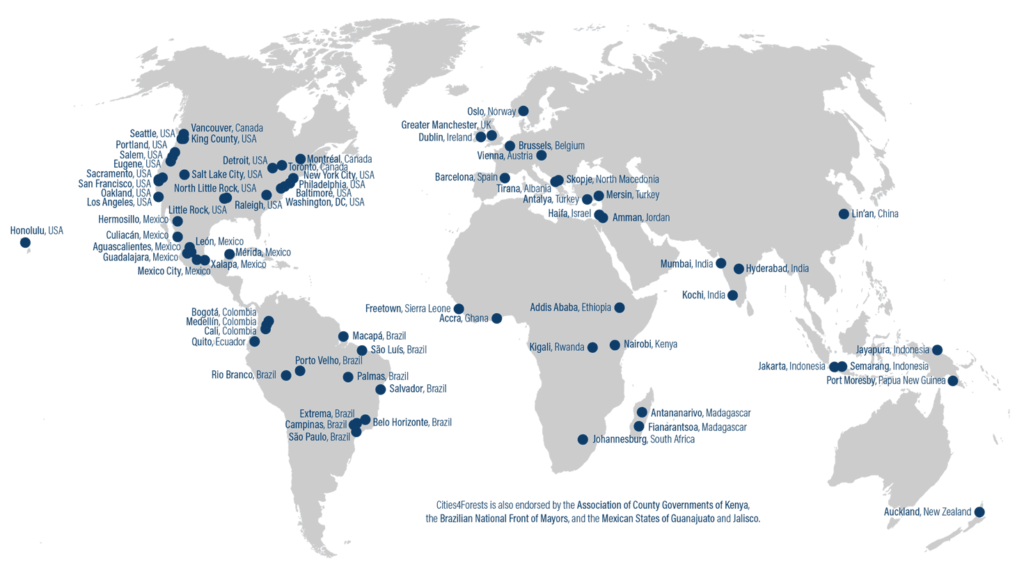Forests: A Nature-Based Solution for Sustainable and Resilient Cities
As the world becomes increasingly urban, cities are looking towards forests as a cost-effective nature-based solution to address numerous societal and environmental challenges at the same time, such as urban heat, social inclusivity, human health, and climate change mitigation, all while providing quality of life improvements. Now, in an attempt to tap into these benefits, cities around the globe are investing in forests.
Cities today have become the engines of growth and prosperity around the world and account for more than 80% of global GDP. But this urban-fueled progress has negative impacts on public health and social equity and is leading to the degradation of vital ecosystem services that cities and their residents depend on. Urbanization, in its current form, is not sustainable, inclusive, nor healthy, and, working in conjunction with megatrends such as climate change and resource scarcity, it threatens the future livability of cities.
To counter these trends and future-proof their cities, city leaders must balance economic progress with social and environmental protection. Nature-based solutions — such as trees, forests, and green areas — are increasingly being recognized as key for balancing social, economic, and environmental development by generating essential ecosystem services, such as mitigating carbon emissions, improving air quality, regulating temperatures, and providing recreational areas that promote social cohesion and well-being. Nature-based solutions have been embraced by many leading institutions such as the World Bank, the European Commission, the United Nations, the International Union for Conservation of Nature, and the World Resources Institute.
As a nature-based solution, forests — which includes everything from street trees to woodlands to faraway tropical forests — provide city leaders with a low-tech, high-impact solution that can contribute to sustainable urban development. Cities and forests may seem like unlikely allies, but their futures are becoming increasingly interlinked across various scales, from those in and nearby cities to faraway tropical forests.
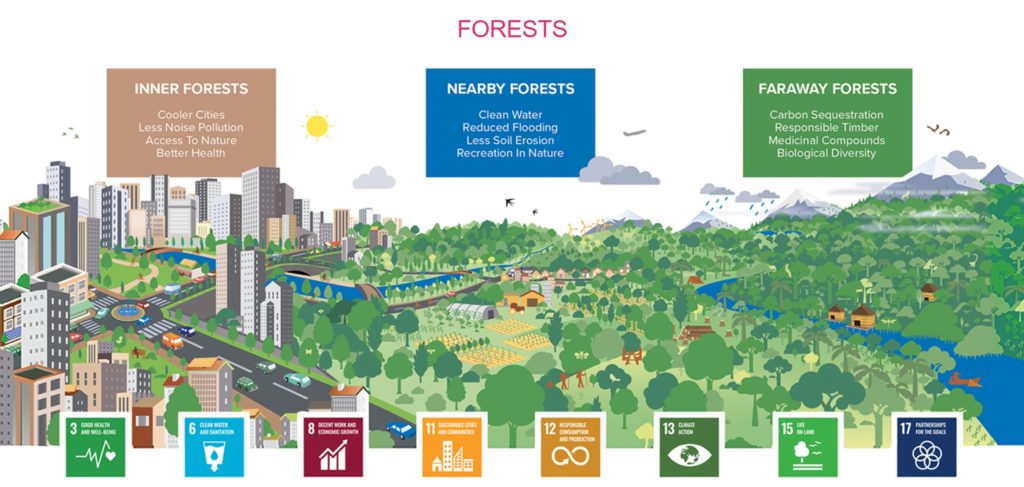
Taking Inner Forests to the Next Level
Many cities around the world have started to consider how inner forests can be used to address social and environmental challenges and have put the protection, expansion, and growth of urban tree canopy at the center of their master plans. By providing cities with essential ecosystem services, urban forests are a cost-effective, nature-based solution for tackling multiple urban challenges and play a vital role in transforming cities into more sustainable, resilient, and healthier places to live. Here´s a look at three cities that are taking inner-city forests to the next level:
Baltimore, United States
Baltimore has become a surprise role model for urban forests programs in the United States and beyond. According to the U.S. Forest Service, American cities are losing trees, approximately 36 million trees per year. But not in Baltimore, where its urban forest is growing by 5,000 trees a year.
Following a city-wide assessment in 2007 that showed a lack of urban tree canopy cover in Baltimore, TreeBaltimore was launched as a mayoral initiative charged with the goal of increasing urban tree canopy from 27% to 40% by 2037.
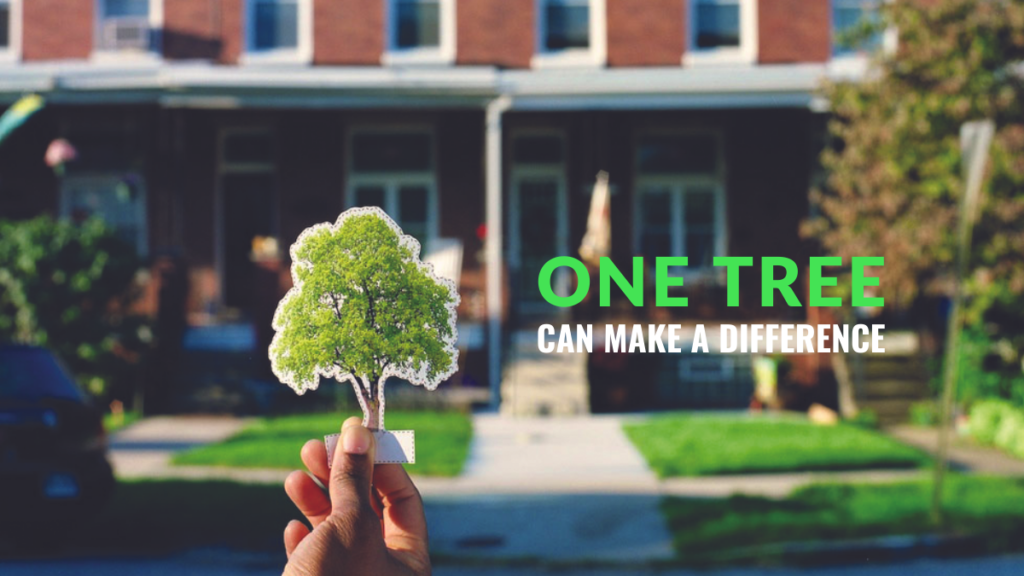
Operating as an umbrella organization, TreeBaltimore brings together city agencies, non-profits, private companies, and citizens to create an urban forest community.
The city of Baltimore also pioneered a technological breakthrough that has enabled cities to better understand the benefits of urban tree canopy coverage. In 2006, the U.S. Forest Service and the University of Vermont created a new type of land cover map in Baltimore that allowed forest maps to be synchronized with other urban data. This breakthrough has enabled the city of Baltimore to understand and quantify the ecosystem benefits of urban forestry programs in monetary terms. It is estimated that a single tree in Baltimore can provide $57,000 in social, economic, and environmental benefits over its lifetime.
Hyderabad India
In recognition of its commitment to growing and maintaining its urban forest, Hyderabad was selected by the Arbor Day Foundation as a “Tree City of the World” in 2021. It is the only city in India with this status. According to the Greater Hyderabad Municipal Corporation, the civic body that oversees Hyderabad, this is a testament to the city’s “sustained and institutional efforts to plant, nurture, and celebrate trees”.
Hyderabad’s forests are maintained by the city’s Telanganaku Haritha Haram program which aims to develop the city’s forest blocks into urban forest parks. The State of Telangana, where Hyderabad is located, plans to develop 129 forest blocks into urban forest parks, covering an area of 150,000 acres within the Hyderabad Metropolitan Development Authority territory.
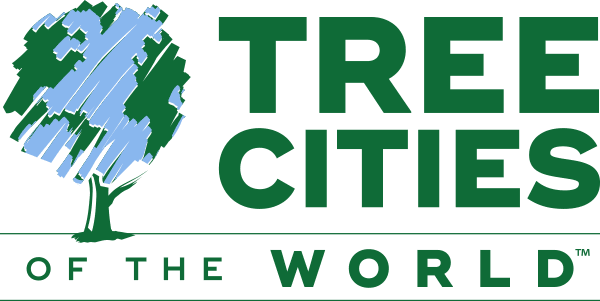
in urban and community forestry. Photo: Tree Cities of the World
Milan, Italy
In 2019, the city of Milan launched an ambitious plan to plant three million trees by 2030 as part of a strategy to green the city and address the climate crisis at the local level. The ForestaMi project aims to plant these trees within the metropolitan area to reduce the urban heat island effect, improve air quality and enhance green areas.
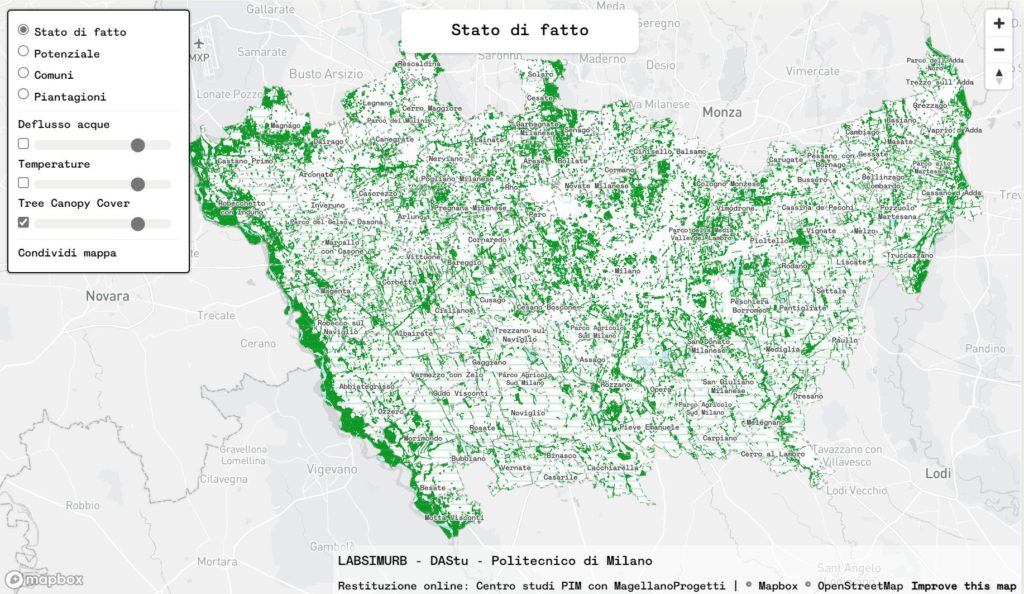
A combination of geographical features, high car ownership, and a lack of tree canopy coverage contribute to Milan having one of the highest levels of air pollution in Europe, almost double the recommended maximum limit. A key feature of the project is citizen participation, which has been unexpectedly high, which can be attributed in part to the global pandemic, which significantly impacted the Lombardy region. Preliminary studies have shown a positive correlation between COVID-19 and air pollution, making the case for improving the city’s air quality all the more important. The ForestaMi project, inspired by Italian architect Stefano Boeri (Bosco Verticale), is a major step towards creating a greener and healthier city for its residents.
Developing Relationships with Nearby Forests
Nearby forests underpin the existence of many of the world’s cities by filtering water, increasing resilience to flooding, and improving air quality. From greenbelts hugging the outskirts of cities to forests located in the cities’ watersheds, nearby forests play an invaluable role in supporting urban life. But despite their importance, nearby forests are often threatened by development needs, such as energy production, urban expansion, agriculture, and timber harvesting. Here´s a look at three cities that are looking to improve their relationships with nearby forests:
Greater Manchester, United Kingdom
Greater Manchester has always been committed to bringing communities and organizations together to make the city’s spaces greener and more climate-resilient. Building on this commitment, the Greater Manchester Combined Authority hopes to set a precedent and highlight the shared responsibility of developing city-forest relationships by transforming a former industrial site on the outskirts of the city into an amazing forest for its residents.
The City Forest Park project brings together over 330 hectares of key green spaces and woods to create a natural space for recreation, culture, wildlife, and well-being. The site is environmentally diverse and is home to 250,000 trees and varied habitats including woodland, meadow heath, and wetland, and incorporates nearly 60 hectares of designated biodiversity sites.
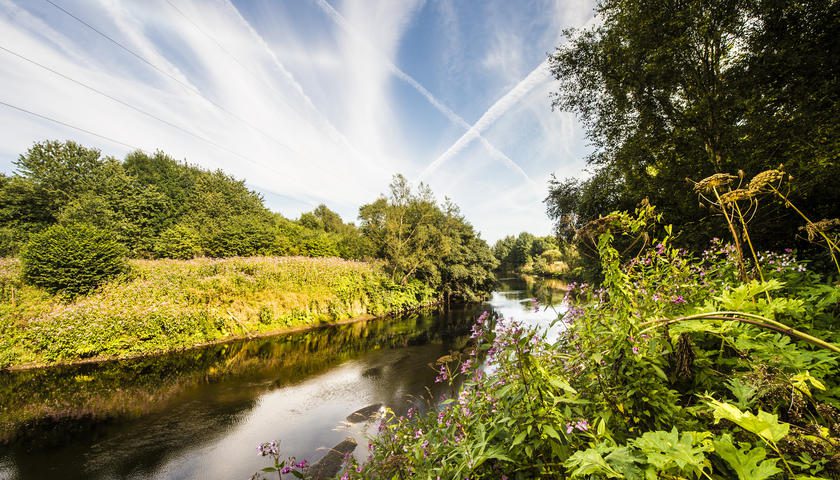
Source: City of Trees
New York City, United States
New York City (NYC) is engaging with forest-based solutions to reduce carbon emissions and to increase its resilience to the effects of climate change. It has been a leader in public urban green spaces for over a century, but especially in the last decade, with its comprehensive restoration, planting, and preservation programs.
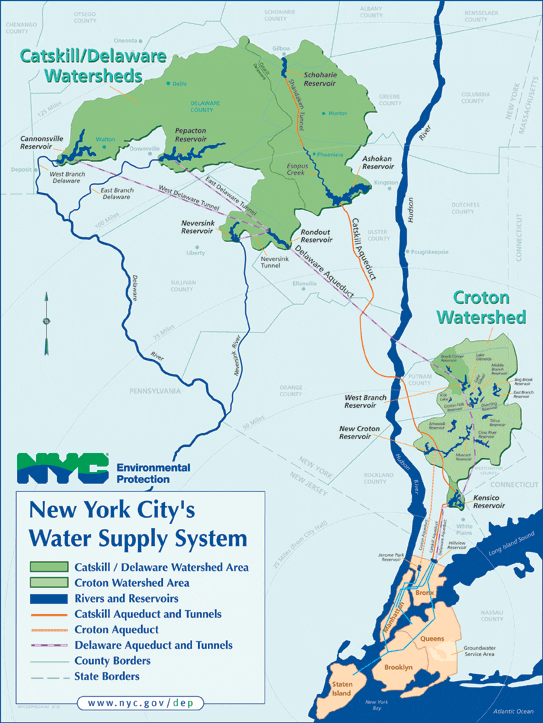
NYC also depends on a large, forested watershed outside its city boundaries to supply its fresh drinking water. This protected forest is the result of generations of planning, conservation, and political leadership by the city. Maintaining, enriching, and expanding these forest areas is a current priority for numerous reasons including, improved human wellbeing, ambitious environmental goals, greater infrastructure efficiency, resilience planning, water resources, and social equity for its diverse neighborhoods.
Madrid, Spain
To address climate change, air quality and the urban heat island effect, the city of Madrid is building a 75-kilometer green belt around the metropolitan area. El Bosque Metropolitano is one of the most ambitious projects launched in Madrid and will connect existing parks, forests, wetlands, and other ecosystems. At a cost of €77 million, the project will be divided into five parts and will take around 12 years to be completed.
During the project nearly half a million trees will be planted, most of them indigenous to the region, and it is estimated that the green belt with absorb 175,000 tones of CO2 per year, improve air quality, and provide much-needed natural cooling during the summer months. El Bosque Metropolitano will also increase green areas, notably in the southern part of the city which have been currently lacking.
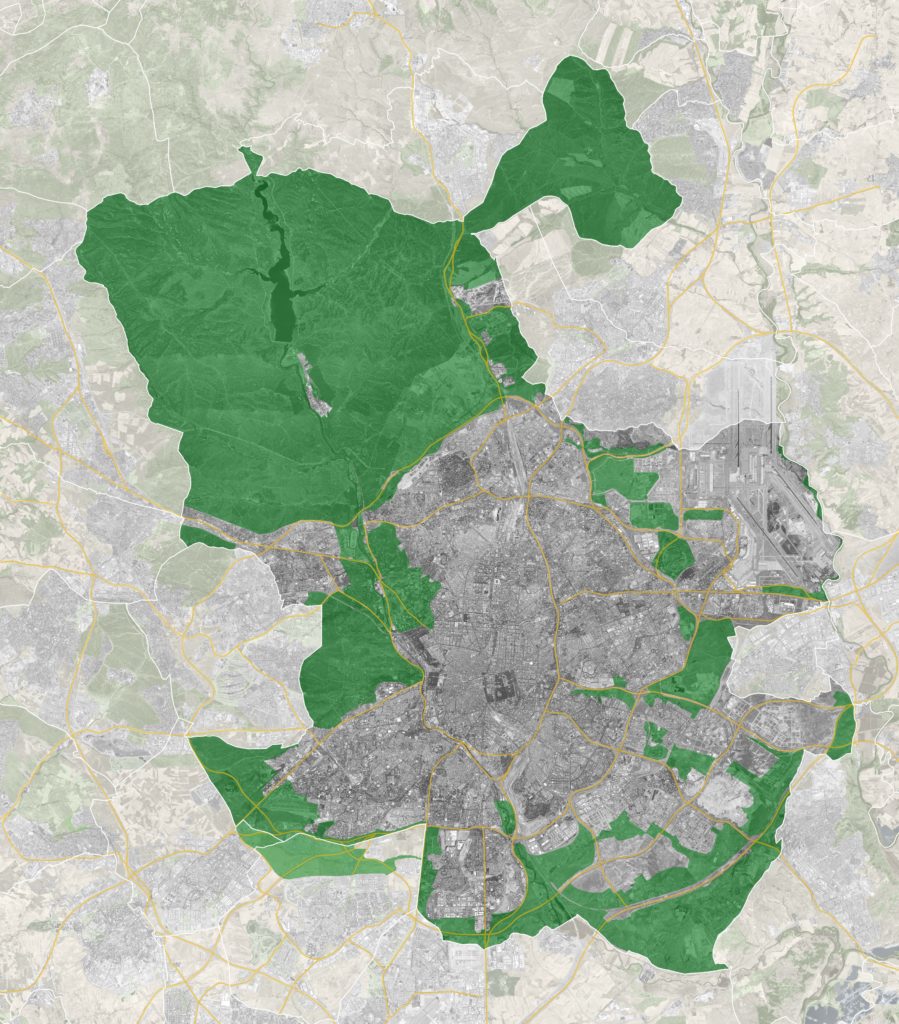
Stewards of Faraway Tropical Forests
Faraway tropical forests are vital ecosystems for supporting life on earth. These forests include some of the world’s most iconic ecosystems, from central Africa and Southeast Asia to the Amazon basin, they sequester vast amounts of carbon from the atmosphere, influence precipitation patterns, and are centers of biodiversity. Despite the vital ecosystem services these forests provide, their very existence is under constant threat from deforestation and forest degradation. According to an analysis carried out by the publication Nature, over 15 billion trees are cut down every year, and the percentage of trees felled since the start of human civilization is 46%.
The threat of climate change is now becoming real and present. Globally we are witnessing an increasing number of climate disasters, ranging from wildfires to storms to droughts. According to the National Oceanic and Atmospheric Administration, the US sustained 22 weather and climate disasters in 2020 where damages exceeded $1 billion. Healthy forests can play a vital role in stabilizing the climate through the absorption of carbon emissions, where it is estimated they could contribute to achieving more than one-third of the Paris Agreement targets. To realize this climate benefit requires halting deforestation at scale and the promotion of forest restoration. With UN projections estimating that nearly 70% of the world’s population will be living in urban areas by 2050, it is the responsibility of city leaders and residents to understand their interdependence on the health of faraway tropical forests and support conservation and restoration efforts.
The next decade is seen as being critical for limiting global temperature increase to below 1.5 degrees, and as world leaders travel around the globe to debate the scale of ambition and timeframe for carbon reductions, the great forests of the world are being felled and degraded. In July, the Guardian published an article stating that the ¨Amazon rainforest is now emitting more CO2 than it absorbs¨. When the world’s biggest carbon sink becomes a source of carbon emissions, surely it is time to act…
Hundreds of cities around the world have acted by supporting the protection and expansion of inner and nearby forests. At the local level, these actions are to be applauded and will help them to better cope with the effects of climate change, but at the global level, they are not sufficient for addressing a major contributor of climate change: deforestation and forest degradation. By becoming stewards of faraway tropical forests, cities across the world can play a vital role in the protection and expansion of natural carbon capture and storage technologies that will help to stabilize the climate and secure a better world for all of humanity.
Investing in Forests to Build Back Better
As global economies work to bounce back from the global pandemic there is a unique opportunity to direct recovery spending towards green initiatives in order to build back better. Embracing natural systems such as trees, forests, and/or green areas can provide cities with cost-effective solutions for addressing multiple urban challenges.
Many cities across the world are beginning to recognize that the livability of their city is dependent on the health of forests. In 2018, Cities4Forests was launched to help cities better support forests, both within and beyond their urban boundaries. Today, Cities4Forests has more than 70 members who are committed to protecting, restoring, and investing in forests.
The initiative helps cities to better conserve, manage and restore forests across multiple scales by providing technical assistance, capacity building, and facilitating financial investment. Visit Cities4Forests to learn more about what these cities are doing and how you can get involved.
